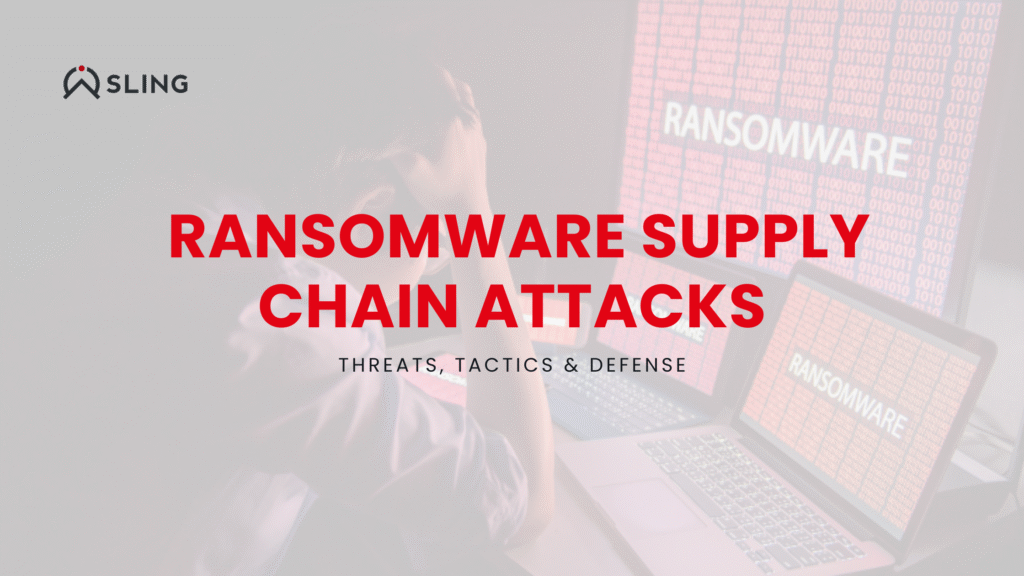The New Era of Ransomware Threats
Ransomware has evolved far beyond the days of simple email phishing campaigns. Today, attackers are exploiting the interconnected nature of modern business ecosystems, targeting supply chains to maximize damage. These ransomware supply chain attacks infiltrate through trusted third-party vendors, software providers, or service partners, making them harder to detect and far more devastating.
Recent threat intelligence highlights how serious the problem has become. According to Kela’s 2024 ransomware report, more than 3,600 victims were listed on ransomware leak sites in a single year, and many of these incidents were traced to third-party compromises. Attackers are increasingly using Ransomware-as-a-Service (RaaS), which allows even low-skilled cybercriminals to deploy advanced ransomware attacks through the supply chain.
The consequences go far beyond immediate financial loss. Supply chain ransomware attacks can disrupt entire industries, erode trust between business partners, and lead to significant regulatory penalties. The good news is that with the right threat intelligence and proactive defense strategies, organizations can detect vulnerabilities early, identify high-risk vendors, and stop ransomware before it spreads.
What Are Ransomware Supply Chain Attacks?
Ransomware supply chain attacks occur when cybercriminals compromise a third-party vendor, service provider, or software supplier in order to gain access to multiple downstream targets. Instead of attacking a company directly, attackers exploit trusted connections within the supply chain, often bypassing traditional security measures.
These attacks are especially dangerous because supply chain partners often have privileged access to networks, sensitive data, or critical systems. Once compromised, attackers can spread ransomware to several organizations in a single campaign, making the scale and impact far greater than a typical ransomware incident.
Key Characteristics of Supply Chain Ransomware Attacks
- Indirect entry point: Attackers gain access through vendors or software updates.
- Wider impact radius: One breach can affect dozens or even hundreds of companies.
- Harder detection: Trust in suppliers often means fewer security checks.
- Potential regulatory fallout: Breaches may involve shared sensitive data.
High-profile cases in recent years, such as ransomware delivered via managed service providers or tainted software updates, have shown that supply chain attacks are not just possible but increasingly common. This shift underscores the need for continuous vendor risk monitoring and strong incident response plans.
The Rise of Ransomware Groups
The ransomware ecosystem has expanded rapidly, with cybercriminal groups becoming more specialized, organized, and aggressive. In 2025, the threat landscape is dominated by well-funded ransomware gangs and Ransomware-as-a-Service (RaaS) operations that rent out their tools to affiliates in exchange for a share of the profits.Kela’s 2024 ransomware research revealed that over 3,600 victims were exposed on ransomware leak sites in a single year, highlighting the unprecedented scale of attacks. Many of these incidents stemmed from supply chain compromises, where attackers exploited vulnerable vendors to impact multiple downstream organizations.
Notable Ransomware Groups in 2025
- LockBit – One of the most prolific groups, known for targeting critical infrastructure and leveraging double extortion tactics.
- BlackCat (ALPHV) – Operates as a RaaS model with sophisticated customization options for affiliates.
- Clop – Specializes in exploiting zero-day vulnerabilities in file transfer tools and supply chain software.
- Play – Known for stealthy infiltration of managed service providers to access multiple client networks.
- RansomHouse – Focuses on exfiltrating sensitive data and applying pressure through public leak threats.
Common Characteristics of Ransomware Groups
- Professional operations – Dedicated development teams, negotiators, and PR strategies.
- Global reach – Affiliates and victims span multiple industries and geographies.
- Aggressive extortion – Threats to leak stolen data if ransom is not paid.
- Advanced evasion – Use of encrypted communications and anti-forensics tools.
These groups continue to refine their techniques, making ransomware supply chain attacks more efficient, more destructive, and harder to stop without proactive intelligence and layered defenses.
Common Tactics Used by Ransomware Groups in Supply Chain Attacks
Ransomware supply chain attacks can be either carefully targeted or purely opportunistic. While some groups deliberately pursue specific high-value targets, many simply look for any available weakness in a vendor or software provider they can exploit. If attackers see an opportunity to gain valuable data, disrupt operations, or demand a ransom — they will take it.
This unpredictability makes these attacks even more dangerous, as any organization connected to a vulnerable vendor can become collateral damage. Whether targeted or opportunistic, ransomware operators often use a similar set of tactics to infiltrate and exploit supply chains.
1. Exploiting Software Vulnerabilities
Attackers frequently target vulnerabilities in widely used software, especially in supply chain management systems and vendor tools. A single unpatched flaw can give them remote access to an entire ecosystem of connected businesses.
Example: The exploitation of zero-day vulnerabilities in popular file transfer tools, which allowed ransomware to spread to multiple corporate clients.
2. Compromising Vendor Access Credentials
Many suppliers have privileged access to their clients’ systems for maintenance, updates, or monitoring. Stolen or guessed credentials provide attackers with a direct route into internal networks without triggering alarms.
3. Targeting Managed Service Providers (MSPs)
MSPs often manage IT environments for dozens or hundreds of companies. By compromising an MSP, ransomware operators can distribute malicious payloads to all connected clients in a single coordinated attack.
4. Double Extortion & Data Leak Sites
Rather than relying solely on encryption, ransomware groups now also steal sensitive data and threaten to release it on public leak sites if payment is not made. This increases pressure on victims, especially those handling regulated data.
5. Ransomware-as-a-Service (RaaS)
Some groups operate like legitimate businesses, renting their ransomware tools and infrastructure to affiliates. This model lowers the barrier to entry for cybercriminals and accelerates the spread of ransomware through the supply chain.
Why Ransomware Attacks Are So Devastating
Supply chain ransomware attacks have an outsized impact because they exploit the interconnected nature of modern business operations. When one vendor is compromised, the ripple effects can be immediate and far-reaching.
1. One Breach, Many Victims
A single compromised vendor can infect dozens or even hundreds of clients in one incident. This amplifies the scale of damage compared to a direct ransomware attack on just one organization.
2. Loss of Trust Between Partners
Vendors and clients rely on mutual trust. A ransomware incident can shatter these relationships, leading to lost contracts, legal disputes, and long-term reputational harm.
3. Regulatory and Compliance Fallout
Supply chain breaches often involve the exposure of regulated data — such as health records, payment information, or personal identifiers. This can trigger investigations, fines, and stricter compliance obligations.
4. Operational Disruption
Critical systems and services may be brought offline for days or even weeks. In manufacturing or healthcare, this downtime can have life-or-death consequences.
Impact Statistics
- The average downtime from a ransomware attack is 20–30 days for full recovery.
- Global ransomware damages are projected to exceed $265 billion annually by 2031 (Cybersecurity Ventures).
- In supply chain incidents, recovery can take significantly longer due to the need to coordinate multiple affected parties.
The Role of Threat Intelligence in Preventing Attacks
Stopping ransomware supply chain attacks before they spread requires visibility, context, and timely action, all of which are enabled by strong threat intelligence. The earlier an organization can detect suspicious activity in its vendor ecosystem, the better its chances of preventing a breach.
1. Detecting Early Warning Signs
Threat intelligence tools can monitor for indicators of compromise (IOCs) across vendor systems, looking for unusual access attempts, malware signatures, or suspicious file changes. Detecting these signs early can stop ransomware before it deploys.
2. Monitoring Dark Web Activity
Many ransomware operators post stolen data samples on dark web forums and leak sites to pressure victims. Continuous monitoring of these channels can help organizations identify whether a vendor has been compromised — often before the breach is publicly disclosed.
3. Identifying Vulnerable Vendors
By combining vulnerability intelligence with vendor risk data, organizations can proactively identify which suppliers are most likely to be exploited. This allows for targeted security reviews, patch prioritization, or even temporary suspension of risky vendor connections.
4. Integrating with Incident Response
Threat intelligence should feed directly into an organization’s incident response plan. When a vendor breach is detected, security teams can quickly isolate affected systems, block malicious IP addresses, and notify impacted partners.
Checklist: Essential Steps for Supply Chain Ransomware Resilience
- Maintain an up-to-date inventory of all vendors and their access points.
- Enforce multi-factor authentication (MFA) for all vendor connections.
- Require vendors to meet your organization’s security standards.
- Segment networks to limit the blast radius of an attack.
- Keep offline, tested backups of critical systems and data.
- Establish rapid communication channels for vendor breach alerts.
By combining strong vendor management with strong internal security controls, businesses can greatly reduce their exposure to an attack.
Stay Ahead of Ransomware Supply Chain Threats
Ransomware supply chain attacks represent one of the most dangerous and unpredictable threats facing organizations today. Whether targeted or opportunistic, these attacks exploit the trust and connectivity between businesses and their vendors, enabling a single breach to ripple across entire industries.
The rise of sophisticated ransomware groups and Ransomware-as-a-Service means the threat is not going away anytime soon. In fact, the attack surface will only grow as supply chains become more digital and interconnected.
Organizations that succeed in defending themselves will be those that:
- Continuously monitor vendor security risks
- Adopt zero-trust and strong access controls
- Invest in actionable threat intelligence
- Test their incident response readiness
The reality is clear: waiting until ransomware hits is far too late. Businesses that take a proactive, intelligence-driven approach stand the best chance of detecting and stopping ransomware supply chain attacks before they cause catastrophic damage.



